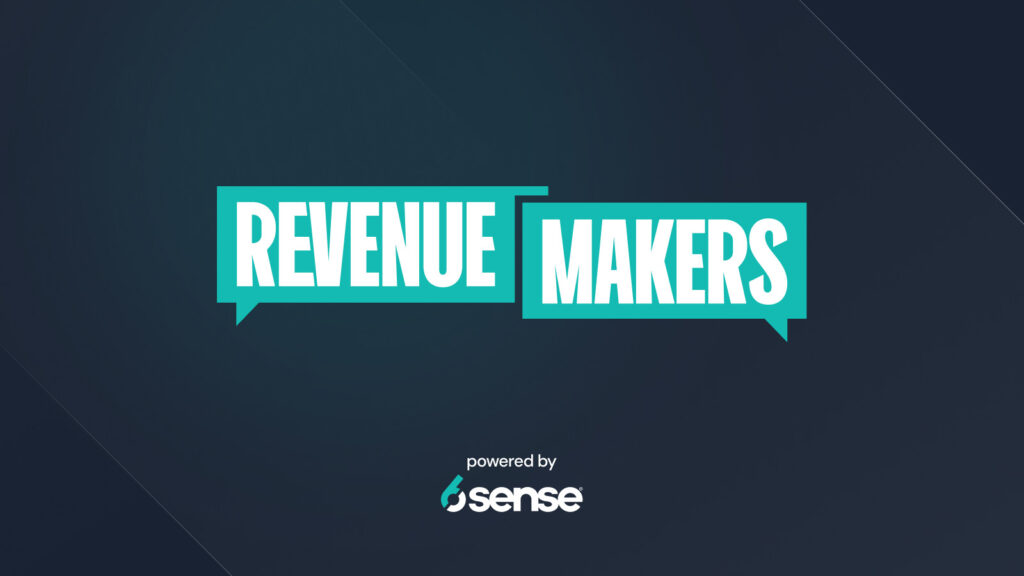Imagine having the ability to see into the future — what would it change about your present? Would you save more money? Spend more? Eat more salad? Pizza? Take more risks? Take more naps?
No, we’re not pitching the plot of a sci-fi movie; we’re referring to the possibilities offered by predictive analytics in marketing. While it won’t tell you whether you should eat more salad (thankfully), it can change the game for your B2B marketing approach.
So, grab a slice of pizza and keep reading to discover how predictive analytics can work for you.
What is Predictive Analytics in Marketing?
Predictive analytics in marketing is a combination of tools and strategies that empower marketers to make data-driven decisions by analyzing historical data and patterns. With the ability to uncover hidden opportunities and mitigate potential risks, marketing can optimize their strategies to produce the best results.
It’s like having a crystal ball that tells you which customers are most likely to make a purchase and present the most value to your organization.
6sense’s cutting-edge predictive analytics tool is powered by advanced algorithms and machine learning capabilities that empower marketers to gain insight into:
- Customer behavior
- Customer preferences
- Customer intent
This technology goes beyond traditional analytics, providing real-time insights and predictive modeling.
Benefits of Predictive Analytics
With a look into the future, you can take action now. The insights gleaned through predictive analytics provide a multitude of benefits when implemented effectively, like:
- Making informed decisions based on data-driven insights. By analyzing historical patterns and trends, businesses can anticipate future outcomes and take proactive measures to optimize strategies.
- Gaining a deeper understanding of customer preferences, behaviors, and needs — enabling businesses to deliver personalized experiences and targeted marketing campaigns that resonate with audiences.
- Streamlining operations by identifying inefficiencies and bottlenecks. By analyzing data, businesses can optimize processes and allocate resources effectively, leading to cost savings and improved productivity.
- Proactively identifying potential churn risks to take preventive measures. With insight into customer usage patterns and engagement metrics, businesses can spot risk signals and intervene with targeted retention strategies.
- Understanding market trends, predicting customer needs, and optimizing marketing and sales strategies to win out against competitors, driving business growth and market leadership.
How to Use Predictive Analytics in Marketing
6sense’s predictive analytics presents endless opportunities for marketing experimentation. If you’re not sure where to start, the following are common use cases of our predictive sales analytics tools.
- Demand Forecasting: Using historical sales data and market trends, 6sense’s predictive analytics can anticipate fluctuations in demand. This enables businesses to optimize time and resources, leading to improved customer satisfaction.
- Lead Scoring & Conversion: With insights into customer engagement and intent signals, 6sense’s predictive analytics tools can assign lead scores and identify prospects with the highest conversion potential.
- Personalized Marketing Campaigns: 6sense provides greater visibility into customer data, enabling marketing teams to segment audiences and tailor messaging to their specific needs and preferences.
- Risk Assessment: By analyzing patterns and anomalies in data, 6sense identifies potential fraud and prevents financial losses — empowering businesses to mitigate risks and protect assets.
- Customer Retention: Providing visibility into customer behaviors, predictive analytics from 6sense identifies customers showing likelihood of churn, facilitating proactive intervention with targeted retention efforts.
Example of Predictive Analytics in Marketing
The fictional company Beta, Inc. sells CRM solutions to organizations nationwide. Their marketing team has created a predictive model using historical customer data, website interactions, and other relevant factors.
This model helps to identify leads with a higher probability of conversion, allowing the team to focus efforts on these accounts and tailor messaging accordingly.
Optimizing their strategies based on predictive insights enables the company to allocate resources effectively, reduce wasted efforts, and ultimately gain a competitive edge in the market.
Predictive Marketing Analytics Best Practices
The key to successfully using predictive analytics lies in how you apply the data. Disregarding these insights is like foreseeing a lottery win in your crystal ball but never buying a ticket.
Make the most sense out of the analytics and fuel your success with these best practices.
- Define clear goals: Set marketing objectives that align with predictive data analytics initiatives. This could include improving lead conversion rates, boosting customer retention, or optimizing pricing strategies.
- Clean up your data: Make sure you have access to comprehensive and relevant data from various sources — like customer interactions, CRM systems, and website analytics. Cleanse and process the data to remove duplicates, errors, and inconsistencies.
- Train and validate models: An advantage that predictive analytics has over a crystal ball is the ability for users to manipulate its inputs for improved results. Regularly update models with new data and validate their performance against real-world outcomes.
- Collaborate: Encourage cross-functional collaboration for a holistic approach to data analysis, model development, and implementation. This will help align predictive analytics initiatives with business goals.
- Monitor and measure: Track KPIs like lead conversion rates, customer retention rates, and revenue growth to assess the model’s performance. Regularly analyze these results and make necessary adjustments.
- Maintain compliance: Adhere to ethical standards and comply with relevant data protection and privacy regulations. Respect customer privacy, obtain necessary consent for data usage, and implement security measures to protect sensitive information.
- Practice continuous learning: Stay updated with the latest trends, technologies, and methodologies in predictive analytics through industry conferences, webinars, and connecting with thought leaders.
Future of Predictive Analytics in Marketing
While predictive analytics naturally focuses on the future, what we have experienced so far is the tip of the iceberg of its potential — and there’s much to look forward to.
One key trend we see becoming more prevalent is hyper-personalization. Using customer data, businesses will deliver highly-targeted experiences to individual customers at scale. This level of personalization will improve conversion rates and foster long-term loyalty.
Additionally, increasing availability of dynamic data from various sources will enable real-time predictions. Businesses can be proactive and respond more quickly to market changes, customer needs, and emerging opportunities.





